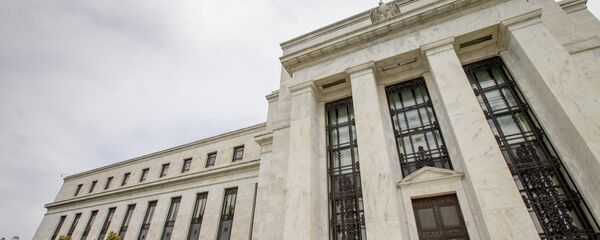Kristian Rouz – US manufacturing sector posted moderate performance improvements in March after several consecutive quarters of contraction, stemming from lower oil prices hindering energy and utilities, and a stronger dollar rendering imports cheaper and undermining domestic demand for manufactured goods.
Yet, international headwinds are still affecting the performance of US industrial enterprises, accounting for roughly 12% of the economy, with only the resilience of the labour market staving off immediate risks of an industrial recession.
A strengthening dollar stemming from the Federal Reserve’s monetary tightening measures, on the other hand, weighed on the performance of other industries as the price of imports fell. These implications might be finally wearing out, as outlined in recent research by one of America’s largest financial groups, Goldman Sachs, citing their “near-term optimism” of an anticipated recovery in the US manufacturing.
Even though February new orders for lasting manufactured goods dropped again, improving job market conditions helped the industrial sector stay afloat, posting encouraging figures in March.
According to data for March released by several regional Federal Reserve banks, including those of Kansas City, Dallas, New York, Richmond, and Philadelphia, general business conditions improved in their respective five states. In PA, the business conditions index rebounded from 0 in February to 12 in March, in VA from 5 to 22, in NY from —10 to 0, in MO from —10 to —5, and in TX from —32 to —4.
These dynamics in indices suggest that the overall situation, albeit still murky, is showing signs of major improvement, confidence measures are still mostly in the negative territory. Goldman Sachs’ analysts feel that in general US manufacturing might be “turning a corner” in March. On the average, all five indices added 16 points, a one-month record-high after 5 consecutive months of declines and near-stagnation prior to that.
"The economy continues to hold its own despite a slowdown in many other countries around the world. The Fed can continue with its policy of gradual rate hikes," Chris Rupkey of New York-based MUFG Union Bank said.
Moderate optimism is based on the already available data on maritime container turnover, trucking traffic and railway activity, all gaining momentum in March. An uptick in transportation volumes suggests an increase in manufactured goods output. Yet, oil is still inexpensive, and the dollar is gaining ground as the Fed is intending to conduct at least two hikes in borrowing costs. That said, any recovery in industrial production, should it happen, would be fragile and likely to crumble from even minor implications.



